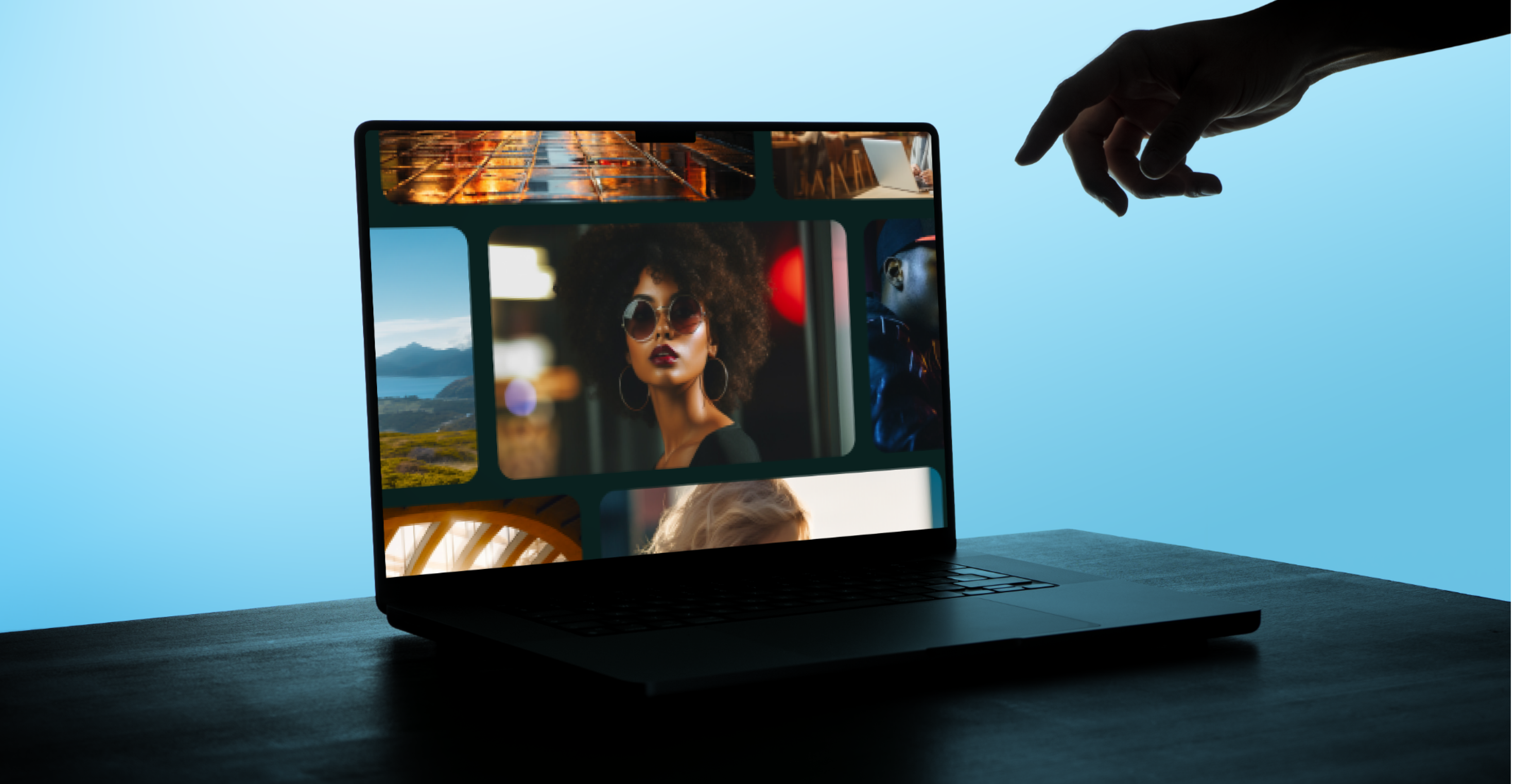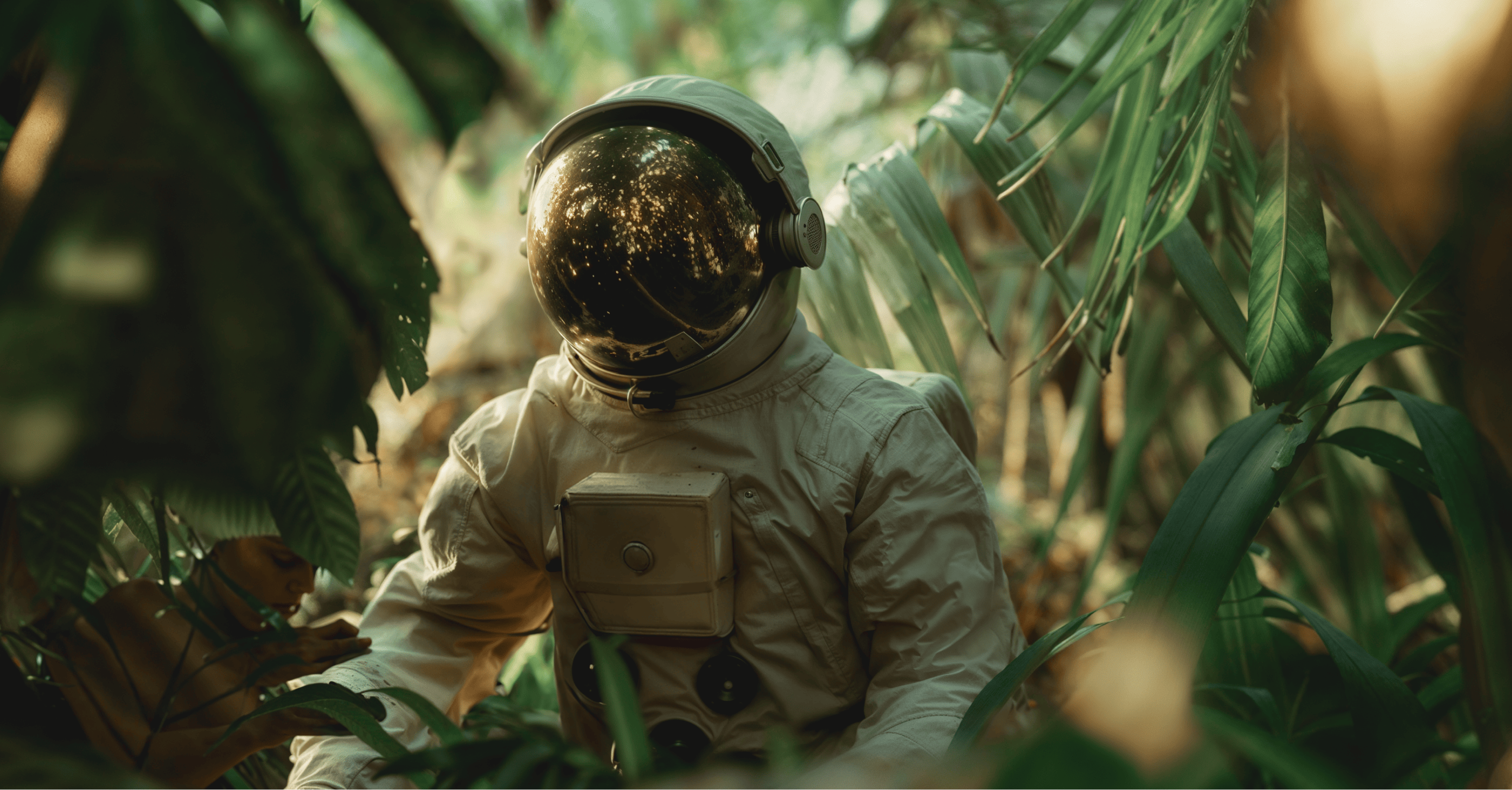
TLDR: Too many great brands are putting their eggs in the wrong baskets to increase CTR. Visually stimulating creative is the primary scroll-breaker... not the hashtags you use.
Clicks! Get more clicks now! $1M in revenue in the first month! 1M followers in the first minute! CLICKS! Download free eBook for $29.99 €.
When you’re talking about increasing click-through rate (CTR), this is typically what the conversation looks like. More of a virtual mugging than practical advice, and just as likely to end with you losing more money than you make.
While these easily-googleable resources may contain one or two fair insights about how to make your brand’s content more clickable, few of them point their lens towards the real culprit for clicks: the brand itself. So, what happens to click-through rate when businesses put brand design under the magnifying glass?
What Determines Click-Through Rate?
Let me blow your mind here: The internet is a visual medium. How things visually separate themselves from other things determines our interest in those things.
Big, I know. Take a moment if you need to.
It sounds obvious, but marketing teams put disconcerting effort and time into trying to circumvent this simple truth. They’ll tell you to hashtag it, write compelling, SEO-driven copy, use ad extensions, and make use of their “award-winning” eCommerce platform. Although most of these are pretty defensible (your copy should be A+ if you don’t want to come off like a used car salesperson), it’s all for naught if your brand’s visual identity is falling short.
Design Makes the Difference for CTR
Most of us won’t open a book if the cover looks “eh”. It goes triple for social media, where most of us encounter brands: “Fine” is a one-way ticket to the mental dustbin. There’s too much visual stimuli for your consumer, and it results in them clicking on one of two things exclusively: 1) content from a source they already know, or 2) content whose visual makeup disrupts their scroll.
If you’re not the former, design is the key to breaking the scroll for your prospects. The way your ad/video/email etc. distinguishes itself from others in your industry determines whether it’s worth a click. The same formula you’d use in a competitive analysis applies to your branding. “Why me?”
Beyond visual distinction, there are ways for an asset’s design to subtly—subconsciously, even—move prospects down funnel. Here are a few design tricks that’ll get prospects clicking in the right direction.
1. Test Like Crazy
Do your subject lines perform better with or without emojis? Are your landing pages too copy-heavy or just right? What generates more engagement on your social media channels: videos or static posts? Unless you’re ready and willing to start testing at scale, it’s all just conjecture.
You’ve done it time and again, surely. Using the formula that worked so well for ad A on post #2, only to find the magic depleted. It’s why researchers don’t just call it a day after 5 or 6 tests—you need a big sample size before you start drawing conclusions.
Though we don’t like to admit it, most marketers don’t test nearly enough creative to know what works for their brands. And without the time, money and skill sets to pump out the multitude of varying assets needed to find what works best, most of us just shrug and accept the process as a complete crapshoot.
How do you do it?
Not with the Crapshoot Technique, that’s for sure. In creative marketing, rapid experimentation is the mother of conversion. Finding what fits with your brand’s voice while remaining visually stimulating is a delicate balance, and most creative marketing teams are incapable of experimenting at this rate. Their designers are already overloaded, and adding heads isn’t an option these days.
The trick, then? Supplement. You can’t depend on a team that’s already at capacity to fill the variation void. To keep up with marketing’s needs for publish-ready asset variants, high performing businesses partner with Creative-as-a-Service (CaaS) teams. These teams act as an extension of the brand, and an alternative to adding to headcount: They learn the brand through and through, and work autonomously to provide creative teams with the variations they need to test at scale.
Especially as marketing and design budgets shrink, CaaS is becoming the best way for creative marketers to find out what clicks with their audience.
2. Be Original
I perceive an invisible chorus of “oh, f*** off”. To their credit, “be original” doesn’t seem like practical advice. Oh, sure! We all just forgot to check the “ORIGINALIZE” box before hitting publish. Brainfart.
But behind this rejected motivational poster slogan is a hard truth: You’re probably not doing all you can to stand out. The creative your team so lovingly crafts is, a large chunk of the time, going unnoticed. Not because it’s milquetoast (though let’s not rule it out entirely), but because it’s not standout.
And it’s not your fault. There’s a slow rise for even established businesses to understand the ability of strong design to transform marketing numbers; leading to understaffed design teams that can’t pump out scroll-stopping creative at a rate that moves the needle.
How do you do it?
Businesses of all sizes—from the Amazons, Shopifys, Salesforces and Reddits to a physical therapy company with less than 100 employees and no in-house design whatsoever—lean on CaaS to support design needs.
Most teams don’t have the design capacity to pump out reliably creative creative at the breakneck pace required to make a mark in the combative digital marketplace. To that end, they partner with CaaS companies like Superside to make their marketing wishes come true: Fast, converting creative that ensures the brand remains engaging and ever-present in prospect’s feeds and minds.
Kins, the aforementioned physical therapy company, learned the power of CaaS to generate clicks firsthand: They increased ad CTR by 200%, and website conversion by over 40%—all with original, just-in-time design.
What Happens to CTR When Design Takes the Wheel?
Many ambitious brands have found a way to move consumers to the second stage simply by leading with design—3.5 times greater than before, no less.
Take San Francisco’s PointCard for example: A fintech company looking to become the de facto payment platform for daily spending. To start spreading the good word, their talented-but-overbooked design team needed their name everywhere, and fast. PointCard used Superside to create nearly 30 creative ad concepts, turning them into 441 static and motion social media ads that yanked prospects out of their endless scroll-state and down the funnel.
This is why CaaS is so valuable. By supplementing design capacity with a bolt-on team of creative professionals, PointCard unlocked a 240% increase in CTR, and a click-to-install conversion rate growth of 275%.
Distinction Determines Click-Through Rate
Think of how much branded content you’ve scrolled past today alone. Just to land here, you’ve probably seen at least 20. Barring organic searches, what brought you here was likely some combination of wit in the copy and “je ne sais quoi” in the design.
Design is what’s amplifying CTR for us, as it does for those we work with, as it can for you. Put less trust in ad extensions, select hashtags and back-alley internet deals, and more in your brand.
















